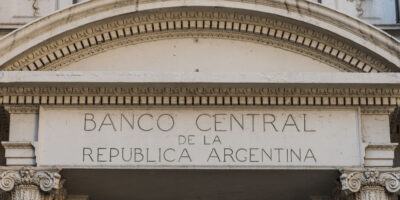Money Creation in the Market
Not all money is the same. This may be obvious, for example, if you compare an American dollar and a Japanese yen. What is not obvious is that not all yen or dollars are the same. We can differentiate money into two forms: base money and credit money.
The distinction between base money and credit money is easiest to understand under a commodity standard, such as one where gold or silver serves as base money. While gold and silver have historically emerged as the commonly accepted medium of exchange, any fungible commodity may serve as base money. Before credit is developed, these commodities circulate and are expected by buyers to be accepted by sellers.
Credit money first arose as a result of the structure of a fractional reserve banking system. If I leave my gold at a bank, the bank offers me a certificate of deposit. This may be redeemable on demand or after a period defined by contract. In any case, the expectation is that the certificate can at some point be redeemed for gold. If a seller of goods believes they can exchange the deposit slip for base money, they may be willing to accept the deposit slip as money, perhaps discounting the face value to compensate for risk and any waiting period required for redemption. Through this process, the banking system multiplies the money in circulation.
As with any market, the market for money, whether base or credit, is regulated by prices. The price of base money is essentially whatever a unit of currency will trade for. In macroeconomics, we often refer to the purchasing power of money, which is its average price as implied by the inverse of a price index. The greater the purchasing power of money, the more willing will producers are to produce base money. The creation of credit is regulated by the interest rate, which is, in effect, the rental price of money. If investors have reason to believe they can earn higher profits than before, then demand for credit increases. This pushes up the interest rate and thereby incentivizes banks to lend a greater proportion of their reserves (White 1999, pp. 56-60). The implied lowering of reserve ratios by banks across the banking system is the means by which the system produces more money in response to an increase in (transactions) demand for money.
The modern system of lending has evolved beyond one based simply on fractional reserves. The financial system has found means of essentially creating money from any asset (i.e., monetizing it) by creating financial instruments linked to them. In previous posts, I have referred to futures markets and the blockchain as examples of market participants extending liquidity in this way. Changes in the prices of futures contracts, which are linked to both interest rates and the price of the relevant commodity, promote an increase or decrease in the quantity of contracts. Likewise, the price of an asset-backed cryptocurrency determines the quantity of the cryptocurrency created. Neither the contracts nor the cryptocurrency is money per se, but either one can quickly be redeemed for money. To the extent a given cryptocurrency backed by assets on the blockchain is accepted as a medium of exchange, blockchain technology may be considered a source of actual money.
Our understanding of money creation has implications for state regulation of finance. There exist processes for money creation that are regulated by the market. Financial regulators ought to take care to not inhibit such processes, which make the market more resilient in times of crisis. During a financial crisis, reliable sources of liquidity perform a stabilizing function. Many of the problems thought to be the domain of central banking are solved by the creation of money in the market in response to changes in demand for money and credit. Interventions that increase the cost of money creation may be to modern financial markets what blood-letting was to its pre-modern subjects.










